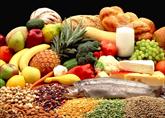10 April 2005 - The Observer - What your children should eat

The good mood diet for optimum health
Web URL: Read the Observer article here
The good mood diet for optimum health
Essential fatty acids
- May help: Depression, dyslexia, ADHD, dyspraxia, autism.
- Where they are found: Oily fish (salmon, sardines, fresh tuna, mackerel), fish-oil supplements, seeds (flax, hemp, sunflower, pumpkin) or their cold-pressed oils. Tinned tuna is a poorer source but 'better than nothing', says Dr Alex Richardson, a research fellow at the University Laboratory of Physiology, Oxford.
- What they do: These are the building blocks of good brain development, similar to the liquid fats - such as DHA and EPA - of which 65 per cent of the brain is composed. They keep the membrane flexible and allow brain cells to signal efficiently. The main group are the omega-3s (found in fish and seafood) followed by the omega-6s (seeds). 'We already have too much omega-6 in our diet,' Dr Richardson reveals, 'so with children, just get loads of omega-3s into them.'
Complex carbohydrates
- May help: Mood swings, extreme behaviour, hyperactivity.
- Where they are found: Porridge oats, oat cakes, brown rice, wholegrains (including wholegrain bread and pasta), beans, lentils, quinoa and most fruit. 'The ideal good-mood cereal is whole oats,' says nutritional therapist Deborah Colson, 'either as muesli or a porridge with fresh fruit added for variety. The next best would be wholegrain toast with an egg or some nut butter - protein food.'
- What they do: When broken down by the body, these slow-burn carbohydrates produce an even dispersal of glucose through the system - without the highs and lows associated with refined carbohydrates (such as sugar and white flour).
Tryptophan
- May help: Depression, impulse control, appetite, low self-esteem, anxiety.
- Where it is found: Turkey, chicken, meat, fish, eggs, nuts (especially walnuts), bananas, avocados, cottage cheese, beans, peas, lentils and soya.
- What it does: This 'good mood protein' (an amino acid) is converted by the body into serotonin, a hormone that elevates mood. Some say the amounts are too small to have an effect, others that tryptophan only works on an empty stomach. Eating slow-acting carbs helps the body absorb tryptophan and convert it.
Essential minerals
- May help: ADHD, fidgeting, hyperactivity, violent and antisocial behaviour, poor attention span, irritability, insomnia, lowered IQ.
- Where they are found: Green leafy vegetables, nuts and wholegrains for magnesium (ADHD, fidgeting); lean meat, liver, offal and tinned oily fish for zinc and iron (nervous system, insulin production); dairy produce, canned bony fish, tofu, egg yolk, pulses and figs for calcium (nerves, cell membranes, sleep); Brazil nuts, wheatgerm, molasses, liver, kidney, sunflower seeds, wholewheat bread for selenium (irritability, depression); unrefined grains, mushrooms, prunes, raisins, nuts and asparagus for chromium (blood sugar levels).
- What they do: Among other things, they are linked to healthy brain development and IQ - which influence behaviour. Last month, the Government revealed that all 496 schools participating in a national healthy eating programme - with an emphasis on nutrition - achieved better results in English, maths and science.
Essential vitamins
- May help: Hyperactivity, aggression, depression, poor attention, low IQ.
- Where they are found: Citrus fruits, berries and watercress for vitamin C; fresh raw or cooked Brussels sprouts, asparagus, spinach, kale, black-eye beans and yeast extract for B vitamins (folates), in which most school meals are deficient.
- What they do: According to the Food and Mood Project, endorsed by the mental health charity Mind, vitamins C and B are 'good mood vitamins' essential for emotional and mental health. Studies have shown that deficiency in essential vitamins can lead to antisocial behaviour.
Low-GI foods
- May help: Mood swings, hyperactivity, restlessness, aggression.
- Where they are found: Oats, ryebread, pumpernickel, pasta and noodles (ideally wholegrain), yams, carrots, baked beans, lentils, dried apricots and other stoned fruits, fruits from temperate climates (not exotics).
- What they do: Like complex carbohydrates, they release glucose slowly into the bloodstream and do not exert a yo-yo effect on mood.
Copyright Guardian Newspapers Limited 2005
